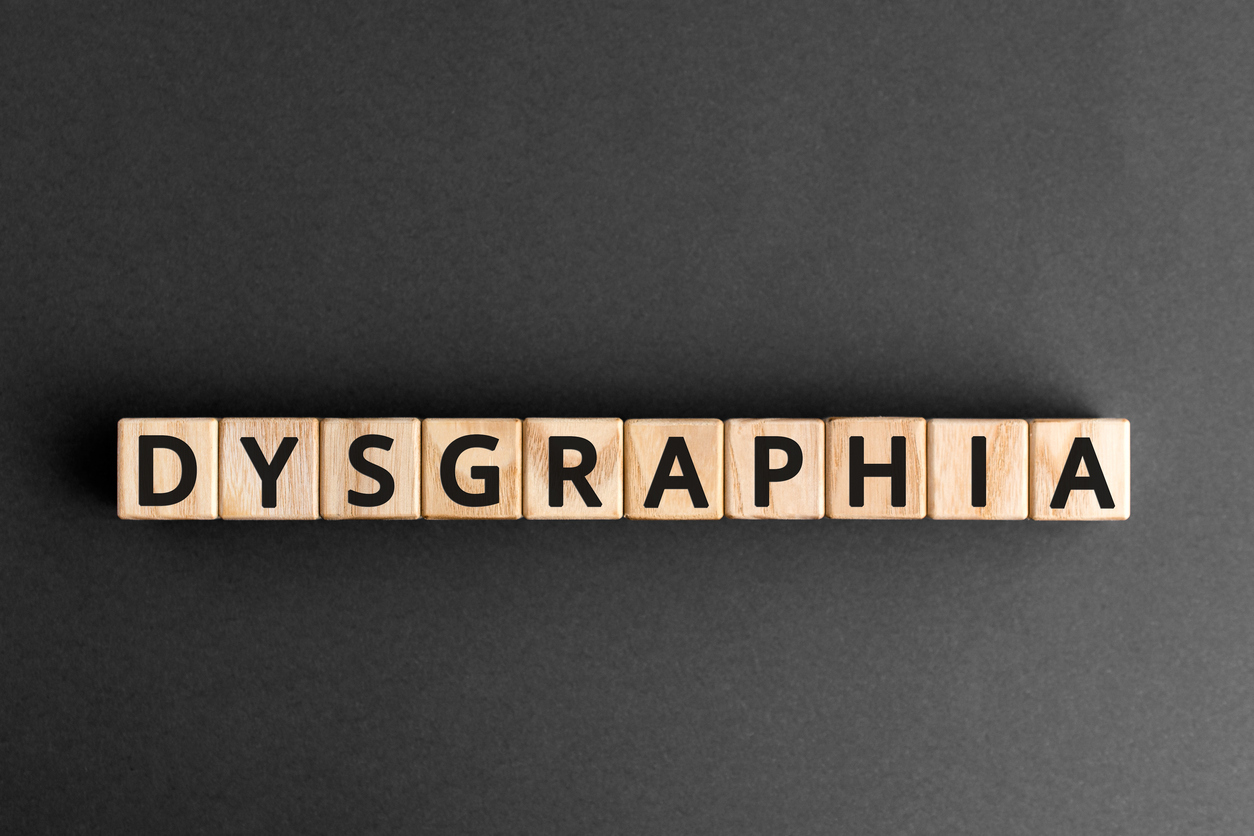Understanding the issues, causes, and signs of dysgraphia
Dysgraphia at a glance:
- A neurological learning difference related to difficulties with handwriting, typing, or spelling
- Can be an acquired (through illness, disease, or injury) or developmental differences
- It may be related to a lack of fine motor skills or spatial perception
- Children with dysgraphia are generally able to read
- It may be accompanied by other conditions such as dyslexia or ADD/ADHD
Writing is a basic function that all children need to learn to do well in school. However, some have trouble mastering writing skills due to a specific type of learning disorder called dysgraphia.
What is dysgraphia, what are signs your child should be tested for, and what can be done to help children learn to master writing skills? This primer will answer those questions.
Understanding dysgraphia
Dysgraphia is a neurological learning difference that can impair a child’s ability to write letters and words by hand. (Typing can be difficult, too.) It can also affect the ability to spell and the speed with which they write.
Some children might express themselves verbally and tell a beautiful story but struggle to write, organize, and structure those thoughts on paper. These children may still be able to read. Others may struggle with both reading and writing.
Causes of dysgraphia
Dysgraphia can sometimes be acquired because of an illness, degenerative disease, or brain injury. This can cause a child (or even an adult) to lose their writing skills.
The other type is called developmental dysgraphia, where difficulties acquiring writing skills show up in childhood. There is no firm cause for why this happens.
It does seem to be related to a brain function called orthographic coding or processing. It refers to the brain’s ability to temporarily store letters and words in the working memory until they can either be analyzed (processed) or stored in the permanent memory. It’s not just the spelling of a word that gets stored, but also its pronunciation and meaning.
Children with dysgraphia often have impaired orthographic coding ability. In other words, they have trouble permanently storing words in the brain. Some may also have difficultly with sequential finger movements or lack fine motor skills.
Types of dysgraphia
Like dyslexia, there are several sub-types of dysgraphia.
Motor dysgraphia
Lack of fine motor coordination and visual perception. Children may have messy or illegible handwriting or be extremely slow writers.
Spatial dysgraphia
Lack of spatial perception that affects the spacing of letters in a word. Although the writing speed may be normal, they will still struggle with handwriting and drawing.
Dyslexia (also called linguistic) dysgraphia
Associated with language processing skills, which impacts writing skills. Most often, it is seen when attempting to spontaneously write text rather than trace or copy letters and words.
Signs of dysgraphia
There are signs that may signal an issue with dysgraphia. Here are several signs to watch for, including:
- Trouble forming letters and shapes
- Tight, awkward, or painful grip on a pencil
- Difficulty following a line or staying in the margins
- Messy or illegible handwriting
- Extremely slow with writing tasks
- Trouble with sentence structure or grammar rules when writing (but not when speaking)
- Difficulty organizing or articulating thoughts on paper
- Pronounced difference between spoken and written understanding of a topic
The signs can change as a child gets older. Young children exhibit problems with writing mechanics, along with a lack of other fine motor skills. As children get older, they may have trouble with grammar, comprehension, and putting their thoughts on paper.
Is dysgraphia related to dyslexia or other learning differences?
Dyslexia affects a child’s ability to read. Dysgraphia affects a child’s ability to write. The symptoms can often be similar, which might make it harder to diagnose. Although they are different conditions, some children do have both learning differences.
Children with ADD or ADHD may also have some form of dysgraphia. Some children with dysgraphia also have an oral and written language learning disability (OWL LD).
Getting help for children with dysgraphia
Although there is no “cure” for dysgraphia, certain interventions can help your child improve his or her writing skills. Occupational therapy (OT) is one of the primary elements. An experienced therapist can work on developing fine motor skills, hand/arm position, and even comprehension.
However, your child may require special accommodations and modifications in school, such as larger pencils with special grips, paper with raised lines, extra time for writing tasks, and alternative methods for completing assignments. Technology, such as voice-to-text programs and apps, could be beneficial.
Learning Lab Florida can help
You can also seek a dysgraphia tutor in Fort Lauderdale to help your child improve writing, reading, and comprehension skills. Early intervention is key to ensuring that your child continues to acquire new skills.
One resource to consider is our I3 Lab, which is designed to help children who are struggling with dyslexia and dysgraphia. Our evidence-based curriculum includes a number of systems, such as very explicit, systematic, multi-sensory writing instruction, the Barton Reading and Spelling System®, Foundation in SoundsTM, and the Fast ForWORD adaptive reading program.
Along with dyslexia, Fast ForWORD can help children with conditions including:
- Reading difficulties
- Auditory processing disorder (APD)
- Mild to moderate autism
- ADD/ADHD
- Other learning differences
If your child has been diagnosed with dysgraphia or dyslexia – or you suspect he or she might have it – we can administer screenings to verify the condition. We will create an individualized plan that best addresses your child’s needs. Contact us to get started.





